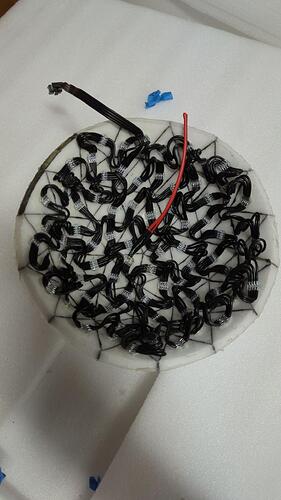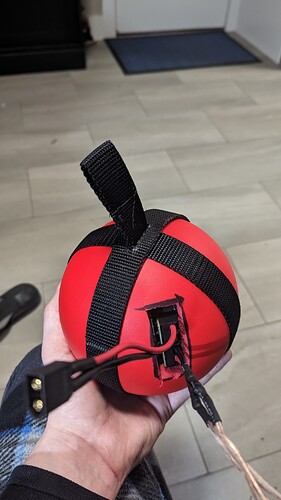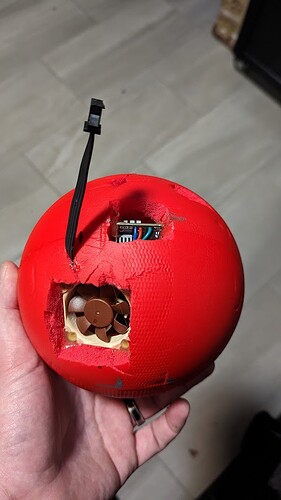I am working on a project and unfortunately I did not anticipate the significant heat build up of all my hardware, and I am too far into it to turn back now. I have a lot of hardware virtually sealed inside of a foam enclosure, including 180 APA102c pixels, PixelBlaze 3, Sensor Expansion, and a 24v to 5v buck converter.
My sensor board works, but eventually stops responding after some time of running the fixture. The PixelBlaze controller stays responsive, patterns are working and I can switch modes. Any patterns dependent on the sensor board fail due to not being able to read from it, and stay static or don’t work at all. I presume this is due to heat because after letting things cool down they work again.
When I took things apart everything was unsurprisingly hot to the touch. My IR thermometer reported the controller and sensor expansion around 120F, and the pixels were closer to 130F. Yep, that is pretty dang hot, but it looks like everything is technically staying within the operating conditions specified in various components’ data sheets.
My project is going to be hit hard, a lot, intentionally. I want to try and avoid active cooling because I doubt any fans durability to the kind of inertial shock it will need to endure. I would also prefer to keep things sealed because my project may be exposed to rain, and I cannot put it in an enclosure that would act as a heat sink. It needs to remain somewhat soft and punchable.
Why would this be happening when I am still within operational temperatures, and does anyone have ideas on how I can mitigate heat accumulation inside of an insulated sealed foam enclosure?
Thanks,


